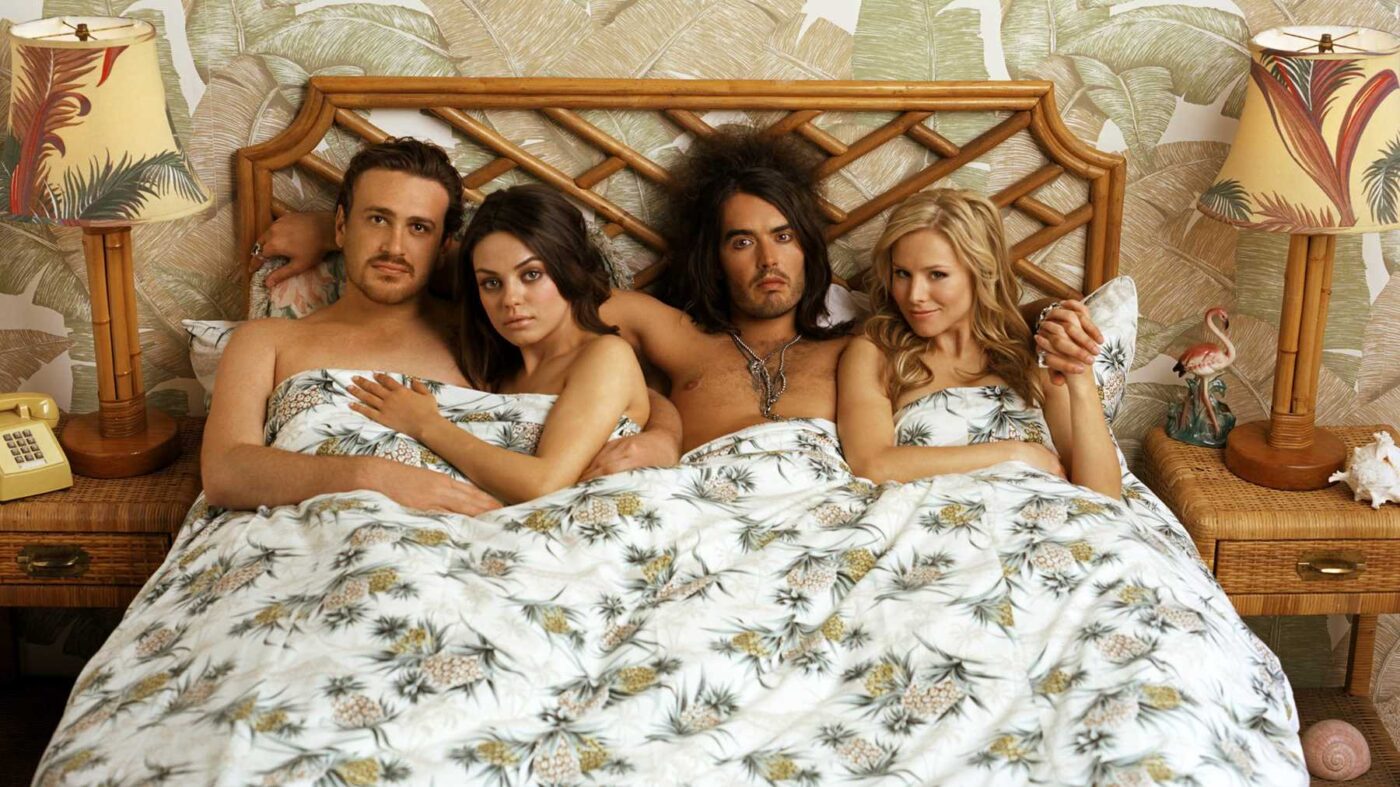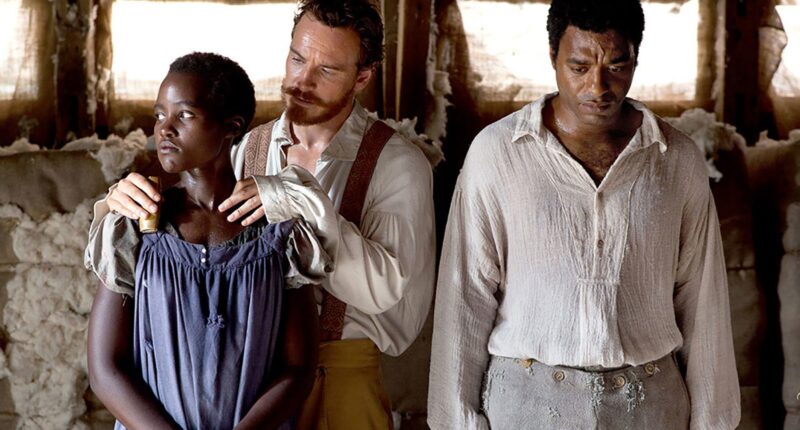Since the dawn of filmmaking (and photography), the scales of onscreen nudity have been tipped firmly in favor of naked women. Over the years, nude females have drastically outnumbered unclothed men in movies and on TV—but the balance could be swinging at last.
One noteworthy example still fresh on the minds of many viewers occurred this summer when House of the Dragon on Max featured two penises in one episode. In the third installment of season 2, the arrival of Aegon at a King’s Landing brothel was marked by an obvious fellatio shot; moments later, the king’s younger brother Aemond bared all in a postcoital strut. While Game of Thrones was notorious for stripping down actresses whenever possible—from extras to main characters—fans were quick to point out that the prequel series seems determined to switch the focus from bare-breasted bordello workers to pants-less power players.
Tom Pelphrey’s post-Viagra nude scene in A Man in Full on Netflix was another streaming moment that made headlines recently, but it was Barry Keoghan’s naked dance in Saltburn last year that truly had audiences gasping (along with some of its other bathwater-related behavior in the film). As many eyebrows as the scene raised, however, Keoghan told Variety it wasn’t about shock value.
“If it justifies the story and moves it forward, why not?” the actor said. “You look at European cinema and they tend to have a lot of scenes that involve nudity, and it’s not a massive thing, really,” he added. “But I think it’s true art. It really is.”
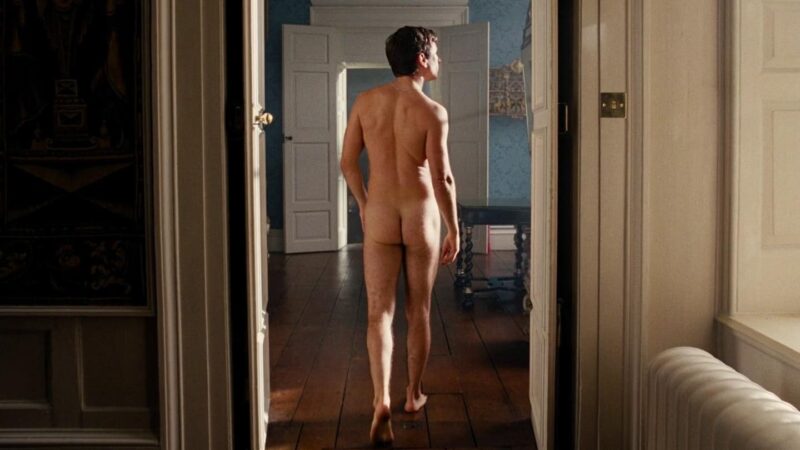
Barry Keoghan in ‘Saltburn’ • Photo: MGM
Keoghan has a point, of course—there’s a long tradition of naked men in European movies that makes more recent examples feel rather overdue. In 1966, the introduction to Ingmar Bergman’s Persona included a three-frame shot of an erect penis, though the director was forced to remove the image for the film’s theatrical releases in the US and the UK. The 1970s in particular were a decade filled with exposed male actors onscreen, from Bernardo Bertolucci’s Novecento (1900), which features Robert DeNiro and Gerard Depardieu getting simultaneously pleasured by the same sex worker in 1976, to the work of Pier Paolo Pasolini, whose nudity-filled 1977 film Salò (The 120 Days of Sodom) is still considered shocking nearly half a century later. This trend wasn’t unique to Europe, either; for example, Japan’s In the Realm of the Senses, directed by Nagisa Ōshima, was met with controversy in 1976 for its explicit sex scenes (not to mention jarring violence).
Americans, perhaps unsurprisingly, have been slower to accept the appearance of male genitals in movies or on TV, though there are examples going back farther than one might realize. While Richard Gere often gets credit as the first major Hollywood star to go nude in Paul Schrader’s American Gigolo in 1980, other actors certainly went before him. Martin Scorsese was told to add nudity to Who’s That Knocking at My Door in 1967 to give the film a sexploitation angle, resulting in Harvey Keitel’s fantasy sex scene. Joe Dallesandro helped pave the way for Gere as a hustler in Paul Morrissey’s Flesh in 1968, while 1970 saw a pre-Rocky Sylvester Stallone bare all to take on three women at once in The Party at Kitty and Stud’s (re-released after Rocky’s success as Italian Stallion). Though it wasn’t sexual in nature, Jan-Michael Vincent’s naked scene in Buster and Billie was a hot topic at the time of its release in 1974.
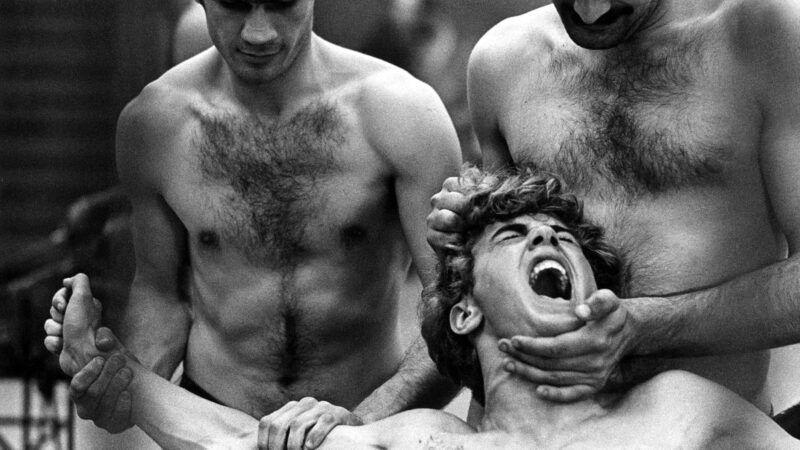
‘Salo’ • Photo: United Artists.
None of these historic turns ushered in a new era of male cinema stars in the buff, however. In the following years, filmmakers in the US often found their efforts to feature naked actors thwarted. As director Amy Heckerling told Slant, she fought to include male nudity in her 1982 coming-of-age film Fast Times at Ridgemont High in the scene where Stacy (Jennifer Jason Leigh) has sex for the first time, but the powers-that-be shot her down.
“So, it wasn’t like I was trying to be, like, nasty or exploitative,” Heckerling explained. “I was trying to say that this is what a young girl’s first experience is like. And they said, ‘No, you can’t show the male organ.’ And I said, ‘How come it’s okay for an R-rated film to have a naked female from the front, but not a naked guy?’ And they said, ‘The male organ is aggressive and the female organ isn’t.’”
Since Heckerling’s struggle, relatively few leading men have gone completely au naturel in movies, and not always in sexual situations. Among the famous film actors to have played the penis to various effects—comedic, titillating, and otherwise— in the past few decades or so are Bruce Willis in Color of Night, Ewan McGregor in Trainspotting, Peter Sarsgaard in Kinsey, Viggo Mortensen in Eastern Promises, Sasha Baron-Cohen in Borat, Jason Segal in Forgetting Sarah Marshall, Kevin Bacon in Wild Things, Heath Ledger in Brokeback Mountain (but only in some versions), Ben Affleck in Gone Girl, Chris Pine in Outlaw King, Jack Reynor in Midsommar, Cillian Murphy in 28 Days Later, Ralph Fiennes in A Bigger Splash, and Mark Wahlberg—or rather, Mark Wahlberg’s infamous prosthetic—in Boogie Nights.
Bacon, who also appeared naked in Pyrates, Murder in the First, and Hollow Man, even filmed a faux PSA in 2017 titled “Free the Bacon” in favor of more male nudity on film.
“There’s a big problem in Hollywood today: In so many films and TV shows we see gratuitous female nudity, and that’s not okay,” Bacon said. “Well, it’s okay, but it’s not fair to actresses and it’s not fair to actors because we want to be naked too.”
“Gentleman, it’s time to free your bacon,” the Footloose star continued. “By bacon, of course, I mean your wiener, your balls, and your butt. Game of Thrones—you got three sex scenes an episode, how hard would it be to just show one or two wieners every couple of minutes? This is an issue of gender equality. Let me be on the show, come on! I’ll play a naked wizard or something.”
Slowly but surely, it seems Hollywood has started listening to Bacon, and TV is finally catching up to the big screen. With the exception of exposed body parts in anthropological documentaries on PBS, nudity on TV wasn’t commonplace until the advent of cable stations, which—like streaming services—aren’t bound by Federal Communications Commission (FCC) restrictions in the same way as the networks. Fast forward to the past several years, which have seen shows like Euphoria—famous for showing some 30 penises in one scene—The Curse, Normal People, The White Lotus, Sex/Life, Minx, and others all take the plunge into naked man territory.
Minx, a behind-the-scenes look at a fictional erotic women’s magazine in the ‘70s, is a particularly interesting case study when it comes to the question of authenticity in onscreen male nudity. While showrunner Ellen Rapoport explained in The New York Times that she tried to present the surplus of penises shown in the series as realistically as possible, the show’s use of prosthetics has been well documented, as has the industry’s reliance on this type of prosthetic in general. The practice has left many wondering how revolutionary or significant the increase of actors in the buff really is if they’re not truly naked. Is wearing a fake penis ultimately any different than putting on a costume?
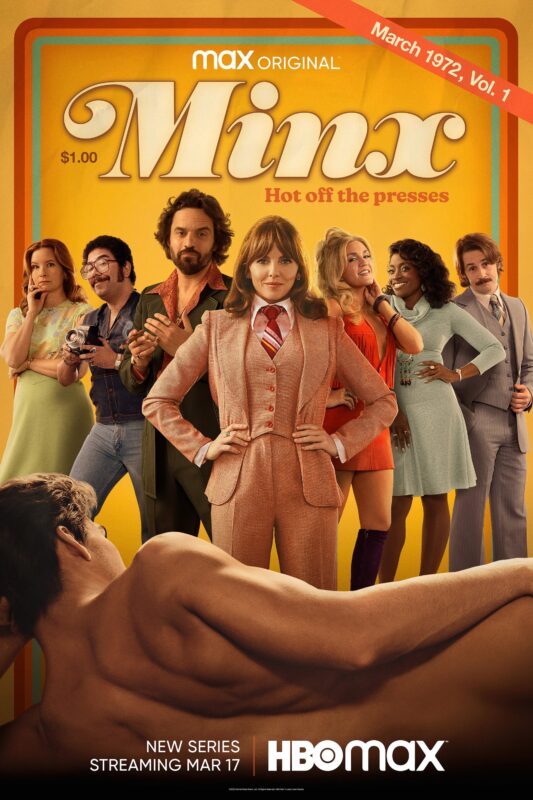
‘Minx’ • Photo: HBO Max.
In an article for The Conversation, Peter Lehman, author of Running Scared: Masculinity and the Representation of the Male Body, wrote that the “growing use” of prosthetics and “the way in which actors wielding them are deceptively described as partaking in ‘full frontal nudity,’ often reinforces existing taboos under a guise of progressivism and gender equality.”
“Mature representations of real, diverse penises, without shame or special significance, would be far more worthy of media attention than prostheses,” Lehman argued.
Along with prosthetics, intimacy coordinators are another thing you’ll find on sets where actors (of either gender) are disrobing—and though one might have expected the opposite, it seems that nudity has become more prevalent since they’ve become commonplace, especially for men.
“I’ve certainly noticed an increase in full-frontal nudity for male actors, and even more so an increased discussion of what that might mean,” Adelaide Waldrop, who worked as an intimacy coordinator on Netflix’s YOU and Obsession, told Elle.
“I think a lot of the increased interest in showing full-frontal male nudity is about trying to rebalance the scales in light of the historic bias of the male gaze in TV and film,” Waldrop continued. “Historically on screen, women have been expected to show much more skin, especially in a sexualized context, than men, while most male nudity has been relegated more to the realm of humor.”
Rapoport was more blunt about the tit-for-tat mentality behind the push for more male nudity in an interview with Vanity Fair, perhaps summing up the feelings of many women in the process.
“I do see male nudity that’s not necessary to the story,” she said. “And I don’t necessarily think it’s a bad thing just to be like, ‘Because men have been seeing us naked for years, we are now going to show men naked for years.’”

